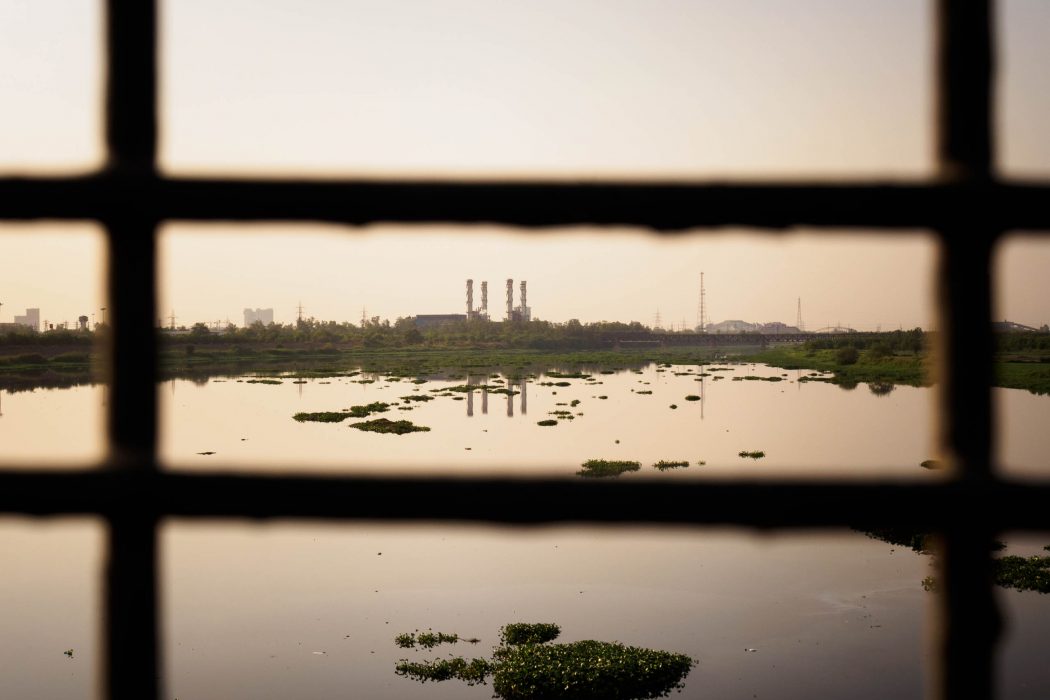Drowning in progress.
Yamuna is not a well-known river in the West. It is not as wide as the Amazon, nor is it as long as the Nile; even amongst Indian rivers it is outclassed in fame by both the Indus, the subcontinent’s longest river, and Ganga, known to the English-speaking world as the Ganges.
The Ganga and Yamuna rivers are, in fact, intimately related – they merge at Allahabad to form what then becomes the modern nation of India’s longest, largest and most sacred river. Even here though, Yamuna is subordinate; despite being the larger of the two when they meet it is nonetheless a tributary, and the watercourse bears Ganga’s name for the rest of its length.
In spite of this Yamuna is, in its own right, an impressive river. Cutting a broad arc from Champasar Glacier in the Himalayas to that final meeting at Allahabad, Yamuna provides life-giving water to more than 57 million people. This importance is reflected in the river’s status as a Hindu goddess worshipped along the river’s length. Daughter to the sun god Surya and sister to Yama, the god of death, she is depicted with a complexion matching the river’s dark waters, a trait variously attributed in antiquity to encounters with Shiva and Krishna.
Viewed in the cold light of contemporary New Delhi, this darkness now appears somewhat less-than-holy. Gazing down into Yamuna from the ITO bridge is like peering into a view of deep space – murky waters contrast against the brighter grey nebulae of pollutants, while metal-and-plastic vessels drift amongst star-fields of gas bubbles floating lazily on the oily surface.
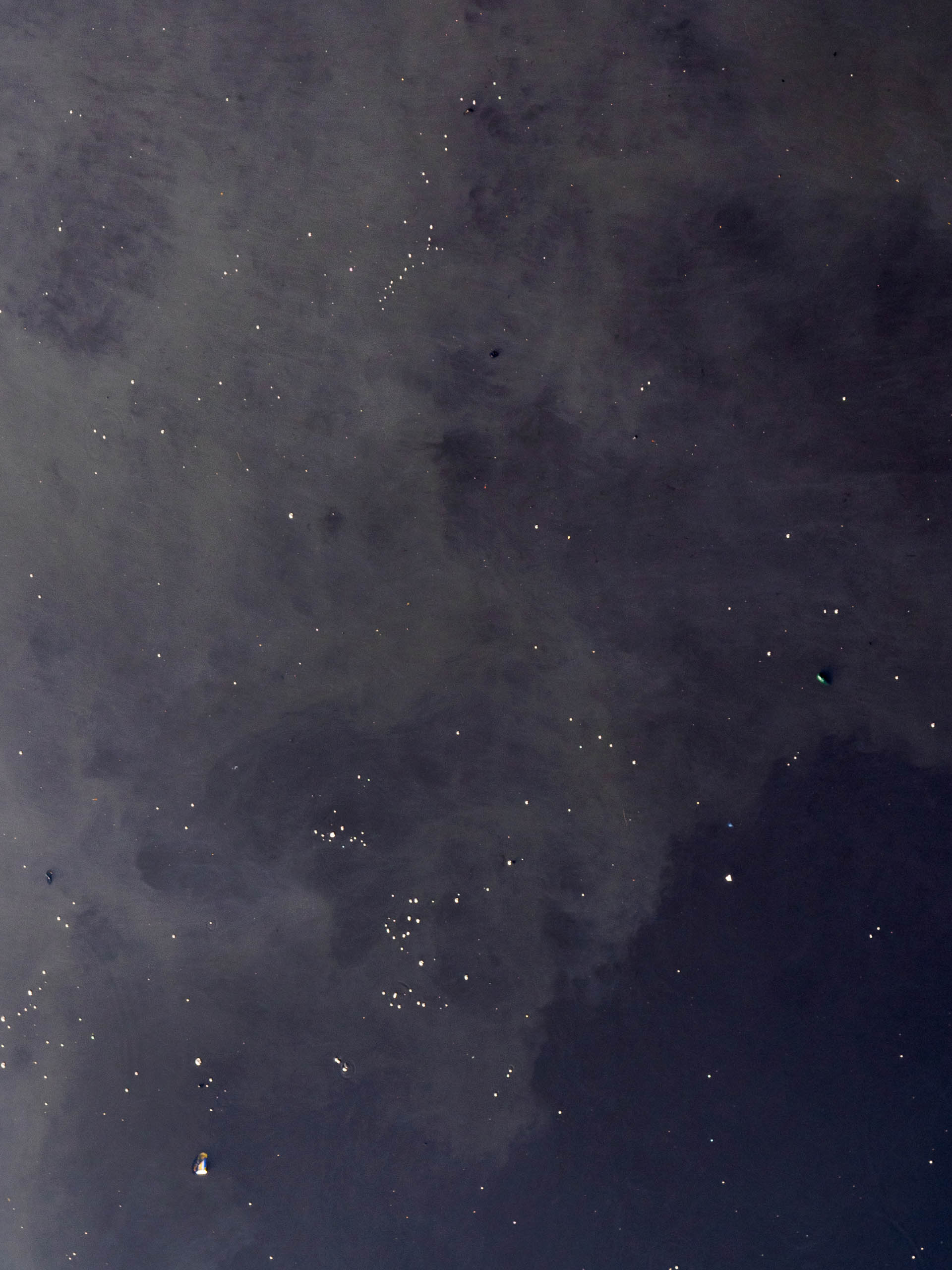
There are still signs of more complex life, though these are tenuous at best. Pariah kites wheel gently at great heights, but you will not see them deign to dive down in search of prey. It is plausible that they see none to pursue. Directly approaching the water’s edge in further search of life will leave bolder visitors faced with little more than vast, droning clouds of mosquitoes.
All of this has obvious human causes. In its journey through the metropolis the river is subject to sustained assaults – agricultural run-off, industrial waste and untreated sewage find their way into the watercourse, choking life out from the waters and leaving them a turgid, ecologically barren and foul-smelling soup.
When considering the holiness of the river to India’s overwhelming majority religion – Hindus makes up 80.5% of its population at the last count – this ill-treatment of its waters is perplexing. On the surface of things it seems against intuition to treat a venerated river as a glorified conduit for the waste of an entire city, and certainly there are objections from all levels of society.
Nonetheless the pollution proceeds apace, which leads observers to an inevitable question:
The answer lies in the rise of industrial capitalism. Some of its contributions are more immediately obvious than others – along the river’s banks vast smoke stacks jut, roads and railway bridges criss-cross and drifts of litter gather and blow in the wind. Look a little closer and those floating patches of verdant weeds dotting the river’s surface betray the presence of agricultural pollutants, with fertiliser run-off from agribusiness and topsoil loss from small holdings feeding the plant life and poisoning the river’s aquatic inhabitants.Why would such an ostensibly religious nation turn its back on one of its great holy rivers without a concurrent mass-secularisation or crisis of faith?
Cast a wider net and more causes become apparent. The vast concentration of the population towards the cities has played an immense role, generating colossal quantities of sewage. New Delhi’s waste-water infrastructure cannot support the load of its 18.6 million inhabitants, so most of it ends up making its way to the river unchecked and untreated.
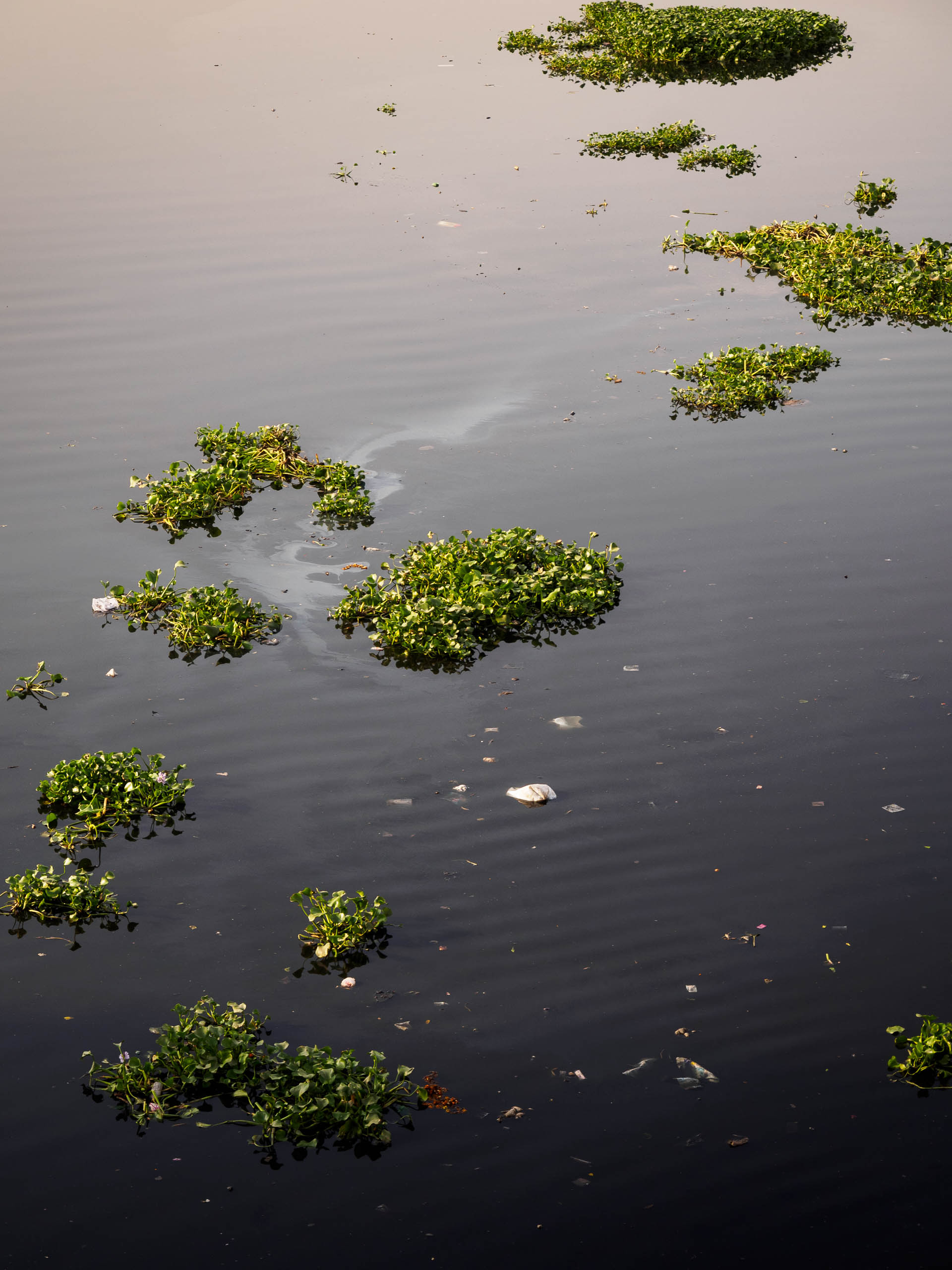
However, some of these causes are not simply physical. With the shift to urban society comes a separation from the natural world – a distancing from the ecosystems which sustain the lives and economies constructed upon them. Just as the river is physically fenced off from traffic on the bridge above, so it is mentally fenced off from the day-to-day lives of the urban citizens of Delhi, reduced to a sad tale of environmental woe; an unpleasant scent on the wind.
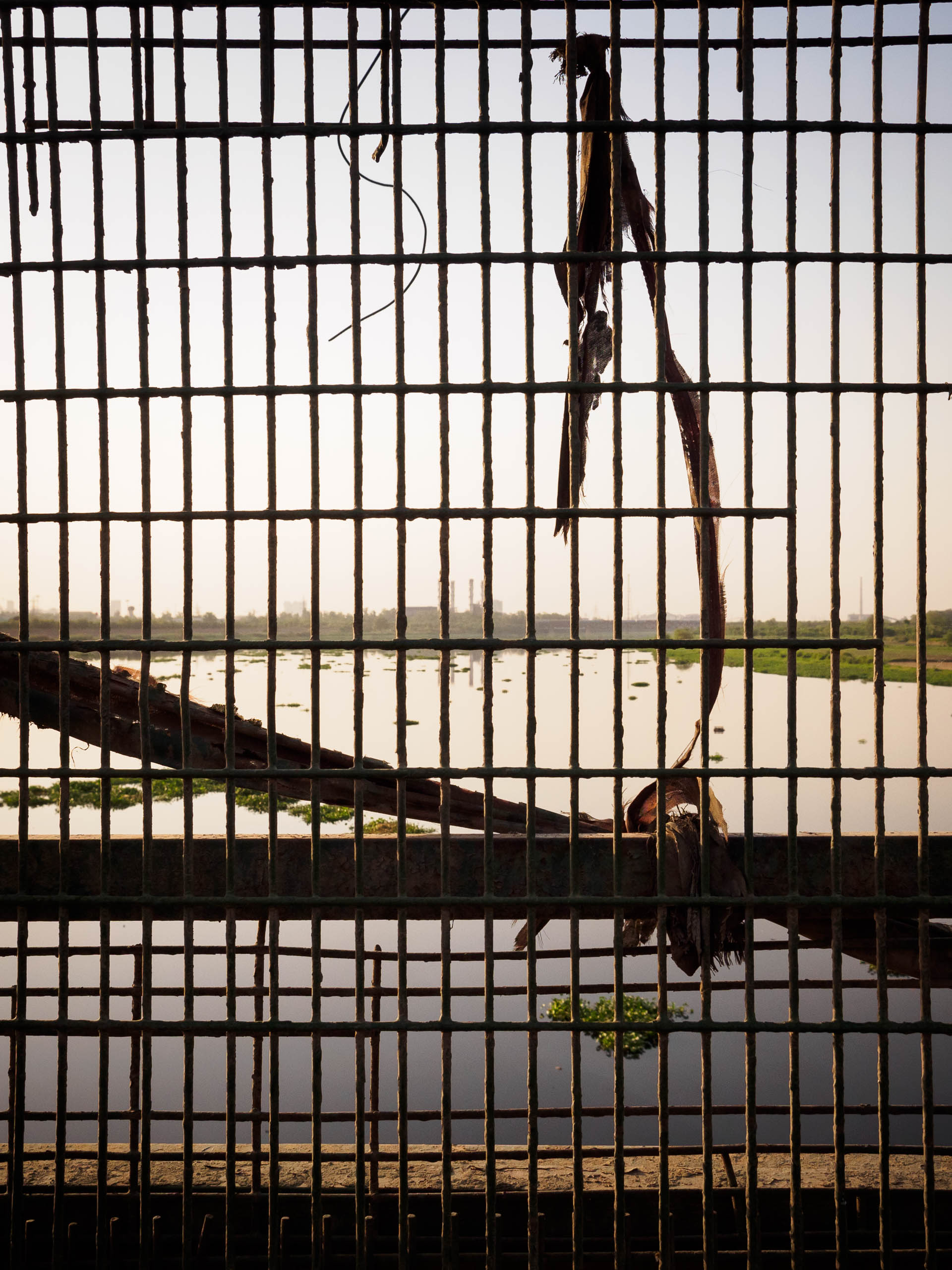
So it is too with the river’s religious significance. In a nation governed by the Hindu nationalists of the BJP it is unthinkable that such matters would be abandoned entirely, yet the same government is pressed with the urgent need to be seen to develop, to grow, to push the country to new heights of economic competitiveness with its South Asian neighbours. Something had to shift.
The answer is religious observances that have also become aspects of a consumer economy. An economy where a government car pulls over amidst rush-hour traffic, its occupant hurriedly disembarking to perform his religious duty.
A nation where this man stands astride decaying piles of saffron petals and flings out an arm, releasing a plastic-bagged offering into the air.
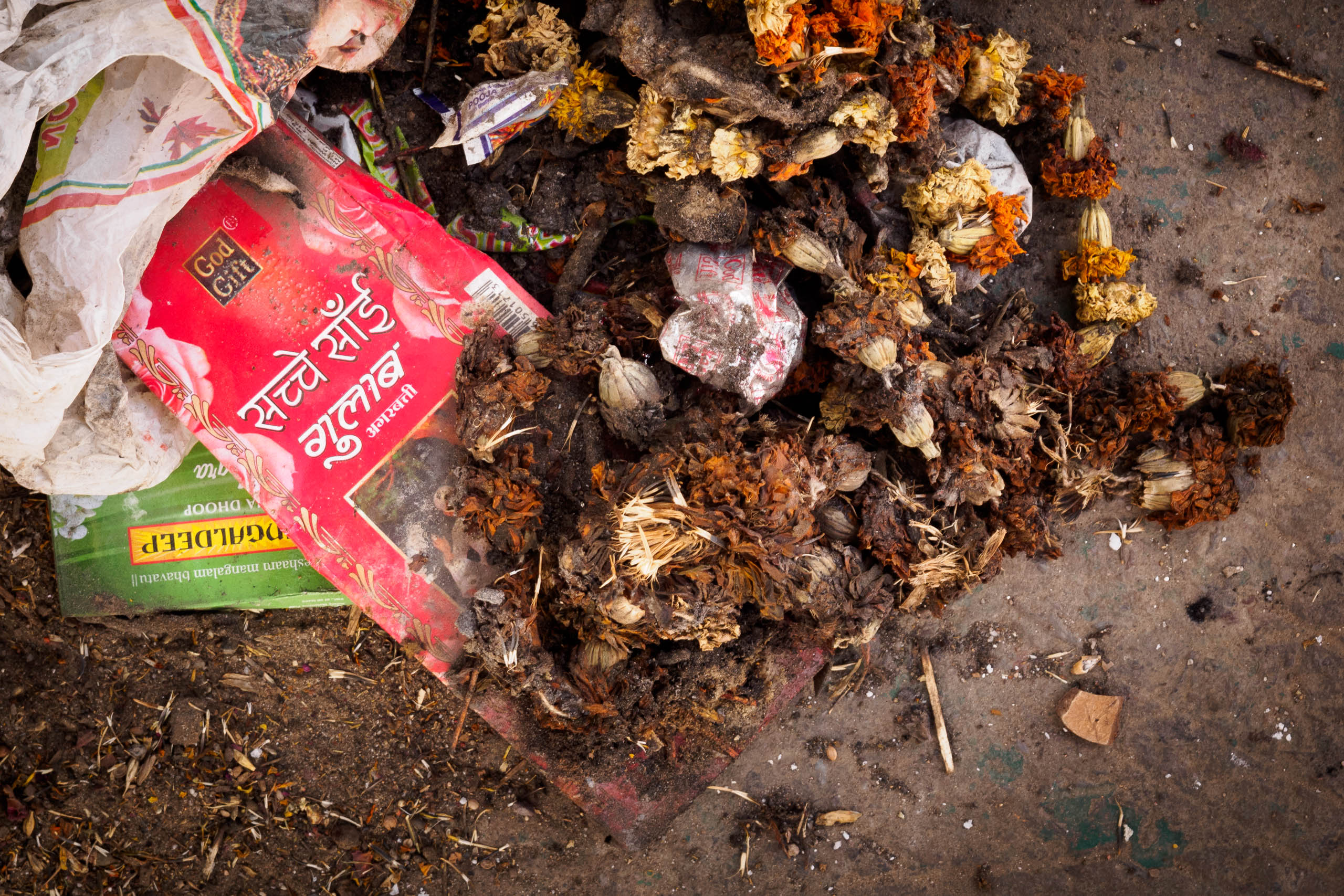
This moment will not be so short-lived for Yamuna. As the official’s bag drifts away on the speckled surface we can contemplate its fate.

Perhaps it will become snared on the ubiquitous weeds, setting up a semi-permanent home there until a shift in water level moves it along. Maybe it will become a meal for a wading bird on one of the river’s cleaner stretches, choking it, ending another life on the dying river. It may even make it to Allahabad, floating on to profane the other river; Ganga bearing the burden of another deity’s token offering.
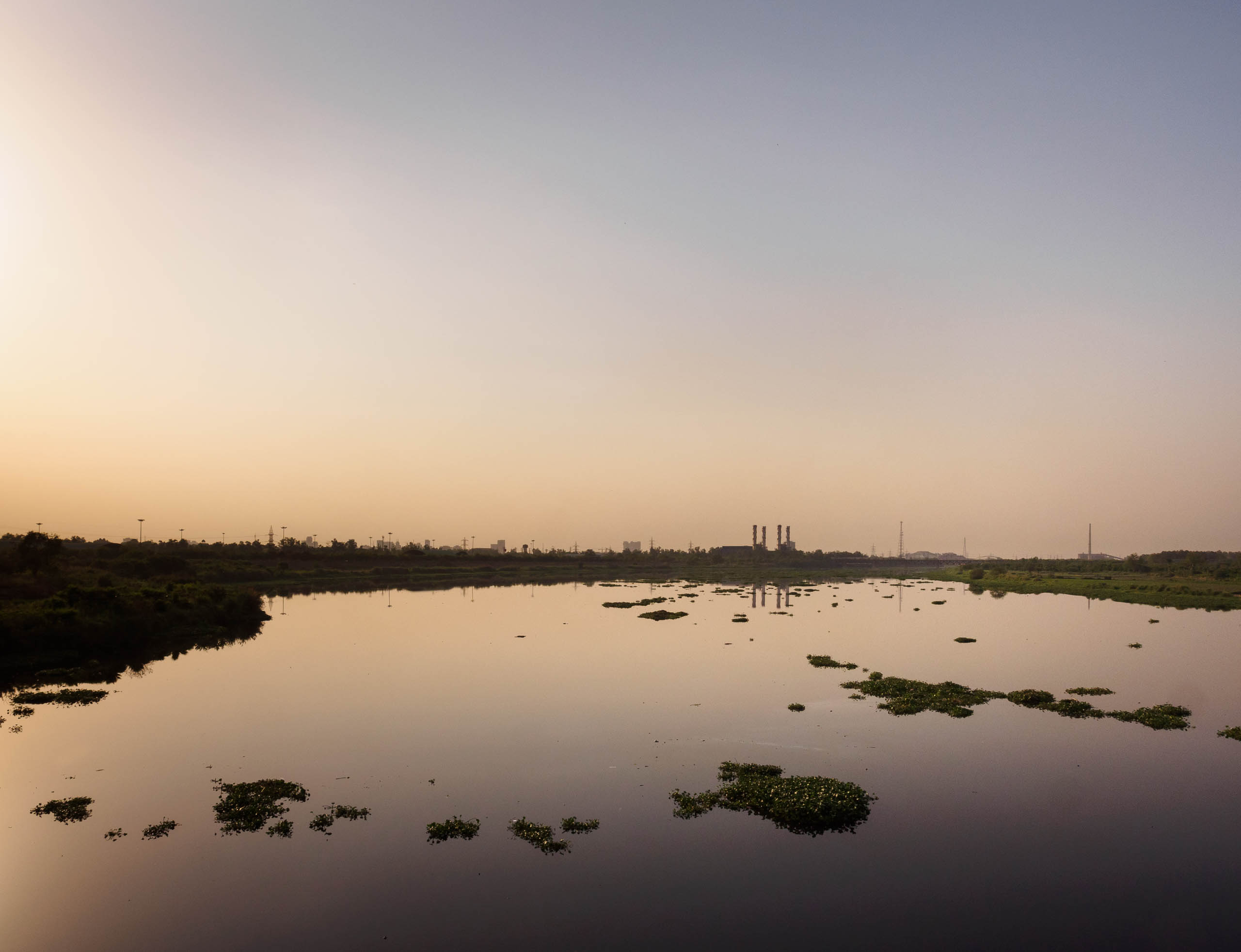
Perhaps it does not matter. Perhaps more money will not fix Yamuna no matter how it is used. Perhaps it is money that is killing her.

